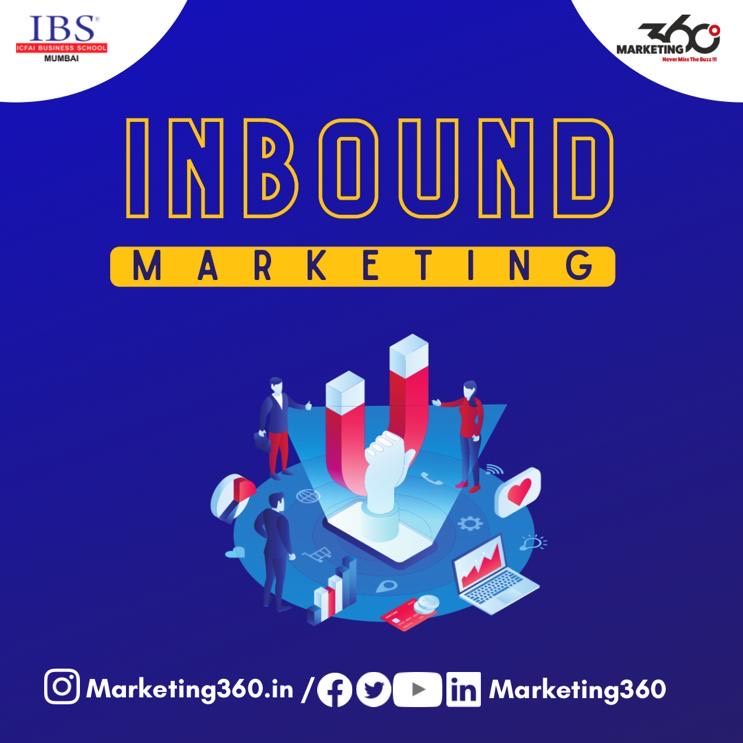
Key Takeaways:
- Inbound marketing may help your business acquire greater visibility—but only if you genuinely embrace content marketing by establishing trust with your target audience and establishing yourself as an authority through high-quality, relevant material.
- Inbound marketing is a good strategy for software firms because it focuses on giving value to your target audience. This strategy is perfect for B2B businesses since it helps you to generate trust and position yourself as a market leader.
- Furthermore, through Search engines and landing pages, inbound marketing allows you to raise brand recognition and create leads. Another advantage of link building is that it takes little money and effort to set up. As a result, inbound marketing is an excellent choice for small and medium-scale enterprises that might otherwise find it difficult to compete with larger corporations.
Introduction:
Inbound marketing is a word you’ve probably heard before, but what exactly does it imply? It’s often difficult to keep track of all the marketing options available. Inbound marketing is a strategy for attracting buyers to a product using a combination of content marketing, social media marketing, SEO, and branding. So, how does it function? Let’s delve a little deeper before we respond.
Inbound marketing states, “Nah, we’re going to sit back and let the consumers come to us,” as opposed to outbound or traditional marketing efforts that rely on TV, radio, telemarketing, press releases, billboards, and other methods to create leads. For good reason, many marketers have underlined the value of inbound marketing. This is why: Inbound marketing, according to 41% of marketers, produces demonstrable ROI. Marketers who use inbound marketing have a good return on investment (ROI) in 82 percent of cases. Inbound marketing may be 10 times more effective than outbound marketing in converting leads if done right. When compared to traditional marketing, inbound marketing generates 3x more leads per dollar. Authenticity in social media posts is preferred by 91 percent of consumers. These figures show that inbound marketing is a cost-effective strategy for increasing earnings while also ensuring that your advertising spend is well-spent. To know many more interesting facts, head on to our Instagram [https://instagram.com/marketing360.in?utm_medium=copy_link]
What is the Strategy of Inbound Marketing?
To develop lasting interactions with leads and consumers, the inbound technique relies on content generation. Every level of the sales funnel requires a lot of resources. You’ll be more likely to attract visitors, nurture leads, and complete transactions if you have more high-quality content. Attracting customers, converting leads, closing transactions, and satisfying customers are the four phases. There are numerous types of material to plan for at each step. Attracting visitors, converting leads, closing transactions, and delighting customers are all good techniques. Great tactics include excellent content that aids in all phases of the inbound process.
While it’s easy to focus on content that attracts visitors to your site, it’s just as important to have content that helps nurture the leads you’ve converted so that when a prospect is ready to make a decision (which could be after the tough times), you’re top of mind, and have been throughout their buyer’s journey, thanks to the content and inbound marketing assets you’ve set up to work for you – through tough times or not.
What are the benefits of using an inbound marketing strategy?
There are three major reasons why inbound marketing is more effective than other strategies. Here are some of the advantages it offers, as well as some tips to get you started.
1. It is a cost-effective technique to use inbound marketing: To get started with inbound marketing, all you need is a website and some content. The start-up costs of building a following for your blogs and social media accounts might be scary for small businesses. You may, however, start small and expand up as your company grows. To get the most bang for your buck, you may also change your efforts based on the outcomes of past campaigns. Traditional advertising methods, such as television commercials, newspaper ads, billboards, and posters, on the other hand, are far more expensive. While these can increase awareness, they aren’t as successful at attracting and keeping clients.
2. Customers that are tech-savvy appreciate inbound marketing: Traditional marketing strategies are losing appeal with clients in the age of social alienation. According to Search Engine Land, inbound marketing strategies such as sponsored search and social media have surged by up to 26% since the worldwide pandemic. Television, print, and direct mail, on the other hand, have all decreased by up to 46%. Inbound marketing is the way of converting leads in the future. People are spending more time on digital platforms as they choose to stay indoors. As a result, they’re more inclined to find companies and make purchase decisions based on internet information.
3. Inbound marketing is beneficial in the long run: Instructional manuals, infographics, case studies, and eBooks are examples of inbound marketing material that have a longer lifespan than outbound content. You may improve its usefulness by updating and republishing your information regularly to keep it current and relevant. Traditional marketing strategies, on the other hand, are brief and to-the-point. In exchange for a few sales, a salesman might spend hours cold emailing and contacting new leads. However, there’s no assurance that you’ll be able to establish trust and significant long-term connections in this manner; rather, it’s a numbers game.
4. Inbound marketing has a genuine feel to it: According to the Edelman Trust Barometer, 81% of people think about trust when making purchasing decisions. Unfortunately, they’re also used to advertisements that make huge promises but never deliver. As a result, inbound marketing tactics that include the creation of practical and engaging content appear to be more authentic in the long term.
Before committing, many decision-makers are significantly impacted by current economic conditions, company conditions, and others engaged in the process. They’re seeking more resources and solutions when things are bad, and you need to be there when they need them and where they’re looking. “In difficult circumstances, companies seek the advice of specialists. They’re looking for advice on how to respond and what they should do next. “They may obtain that direction online through thought leadership content,” says Dean Moot hart, LeadG2’s Director of Client Solutions. “You have a unique chance to establish yourself and your company as a thought leader, subject matter expert, and trusted adviser by providing content that is relevant, useful, and enlightening to your target audience.”
Buying trips and sales processes may often stop in difficult times. When prospects and salespeople are unsure about what to do or what the next best step in the process should be, they might feel paralyzed. Inbound marketing material may assist fill in the gaps and keep the momentum going.
Quality content production and inbound marketing are the future of lead generating. When you provide material that is so relevant to your target audience that they can’t help but return for more.
Let’s take a look at some of the different inbound marketing methods as well as some best practices for increasing engagement.
1. Get to know your buyer persona: The creation of a buyer persona is an essential first step in any effective inbound marketing approach. To begin, a buyer persona defines a customer’s behaviour, requirements, lifestyle, and demographics. You’ll be able to develop captivating content that resonates with your audience as a result of this method. Examine online analytics like mobile traffic, bounce rates, page traffic, and conversion rates if you have relevant data on your existing customers (or prospects). Then look at individual user profiles, call outcomes, and overall income to go beyond the statistics. It’s fine if you don’t have this information. Solicit information from clients by having them complete online surveys or answering a few questions over the phone. Type Form and Online Surveys are two tools that may assist you in creating and launching customer surveys.
2. Create consumer segments:Customers should then be segmented general trends, patterns, or behavioural data. Customers are divided into groups based on demographic characteristics such as age, sex, and locality. Some eCommerce shops send out email marketing campaigns to customers based on where they are in the sales funnel. Consider the following scenario: You’re marketing a CRM product to a group of three customers
Maria (entrepreneur): Maria is a 21 first-time company owner. She wants to bring in local clients to her physical store.
Luke (Marketing Lead): Luke is a marketing executive in his thirties. For his team, he wants to automate advertising duties, improve conversion rates, and create unique reports.
Kevin (Enterprise CEO): Kevin is the CEO of a company that oversees several teams and brands. He’s seeking a CRM platform that can help him organ Ise his team’s work and deliver comprehensive reporting.
Each section has its own set of requirements and features. Create materials that position your product as a solution to their issues to help them go through your sales funnel.
3. Develop useful email campaigns: An effective inbound marketing plan requires you to grow your email list. According to Oberto, for every $1 invested in online marketing, businesses can expect a $42 return on investment. In addition, 81 percent of microenterprises use email as their major client acquisition method, and 80 percent use it to retain customers. Before you send out emails to your contacts based on these figures, make sure they’re relevant to your subscribers. When something comes to mails, quantity isn’t as important as quality.
4. Develop social media ads to reach out to your target market: Globally, there seem to be 3.5 billion active social media users. In the near future, more consumers will use social networking sites to explore brands and follow firms that correspond with their beliefs and interests. Due to these factors, it is a perfect medium for attracting new clients and maintaining relevance with current ones. Customer’s preferences for social media content are also up in the air: 91 percent like businesses that stay real on social media. Customers expect films and behind-the-scenes glimpses that illustrate the brand’s values and purpose, in addition to attractive product photographs.
5. Make MOFU / BOFU material available: Social media marketing is good for clients in the MOFU (Middle-of-the-Funnel) and BOFU (Bottom-of-the-Funnel) segments, in addition to recruiting new customers (Bottom-of-the-Funnel). However, you should include links to instance studies, landing sites, whitepapers, and blog articles in your postings. While a beautiful photo may entice new consumers, purchasers are keener to know about the specifications and features so that they can make an informed purchase decision. PlayStation, for example, shared high-resolution images of the impending PlayStation 5 on the Facebook page. However, there is a link to a page containing technical details for gamers who would like to update their system.
6. Organize a webinar or online training: Due to the epidemic, many in-person activities and conferences have been cancelled, but all hope is not lost. In recent months, companies have opted for free webinars that supply viewers with useful information. The benefit is that viewers may download the video in real-time, repeat segments, and ask questions. What’s the best part? Hosting an internet webinar is less expensive than organizing an in-person event. All you’ll need is a microphone and a camera to get started. If you’re not quite ready to go live, a pre-recorded webinar is a good way to avoid mistakes and edit the video.
Inbound marketing may benefit with wide range of challenges. When it comes to implementing a long-term strategy, Inbound marketing is an initiative that can help you boost brand awareness, preference, converting leads and ultimately revenue.
Issue: I need to raise my brand’s visibility. For up to 93 percent of purchase cycles a search on the internet is the beginning point. You may improve brand recognition organically if your firm emerges at the number one spot or is prominent on a searcher’s social network. To do so, make sure you have the appropriate information and messaging in position to appear in these important inbound channels.
Issue: My issue is that I’d like to enhance my brand preference. By educating, entertaining, and interacting with potential customers before they contemplate making a purchase, you build trust and increase the likelihood that they will choose you when they are willing to buy. The impact of a well-known face should not be understated.
Issue: I need to produce more leads, but I only have a limited budget to do so. Inbound marketing is a comprehensive commitment that pays off in the long run. As you get more competent at developing and managing content that organically draws organic leads, your returns will grow many times over.
Conclusion:
In today’s technologically advanced world, inbound marketing is the way to go. Inbound marketing is a good investment that may help your company acquire clients, create trust, and nurture loyalty in the long run. Focusing on an inbound technique when you design your promotions is a prudent decision that will benefit both your consumers and your organization.
Click here to read more amazing articles on marketing concepts and news.

Megha Shrivastav
Content writer

Yesha Karia
Graphic designer

Swathi Sharma
Editor

Thanks for sharing. I read many of your blog posts, cool, your blog is very good.
Thank you very much for sharing, I learned a lot from your article. Very cool. Thanks.
Thanks for sharing. I read many of your blog posts, cool, your blog is very good.